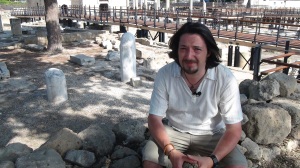 Cyprus plays a significant role in the Bible and indeed, primarily in the New Testament book of Acts of the Apostles and the life of a prominent New Testament figure, Paul of Tarsus.
Cyprus plays a significant role in the Bible and indeed, primarily in the New Testament book of Acts of the Apostles and the life of a prominent New Testament figure, Paul of Tarsus.
Paul (Saul) Barnabus and the gospel writer John Mark, came to Cyprus around the year AD 45. Some suggest between AD 45-48? This was part of Paul’s first Mission.
Cyprus is also referred to in the Old Testament in Genesis 10: 4 under the name of “Kittim”.Josephus identifies Kittim as ‘Citium’ and its connection to Zeno, the Citian (See Josephus. Ant. l. 6. 1)
In the 1st century Cyprus had a large Jewish community. Luke in Acts 4: 36 tells us that Barnabus was a native of Cyprus as were some of the early disciples of Jesus. Acts 11: 19 tells us that when persecution arose concerning Stephen, some Christians scattered and travelled as far as Cyprus. Acts 11: 20 tells us that some of them were already men of Cyprus. Acts 21: 16, also refers to a certain “Mnason” which was a common name amongst the Romans.
Paul, Barnabus and Mark visited the island at the beginning of their first missionary journey (Acts 13: 4-13) Barnabus and Mark returned without Paul on their second missionary journey (Acts 15: 39) and Paul at the end of his third missionary journey passed by Cyprus to the south-west (Acts 21: 3) and again on his voyage to Rome but the winds prevented him from landing (Acts 27: 4)





